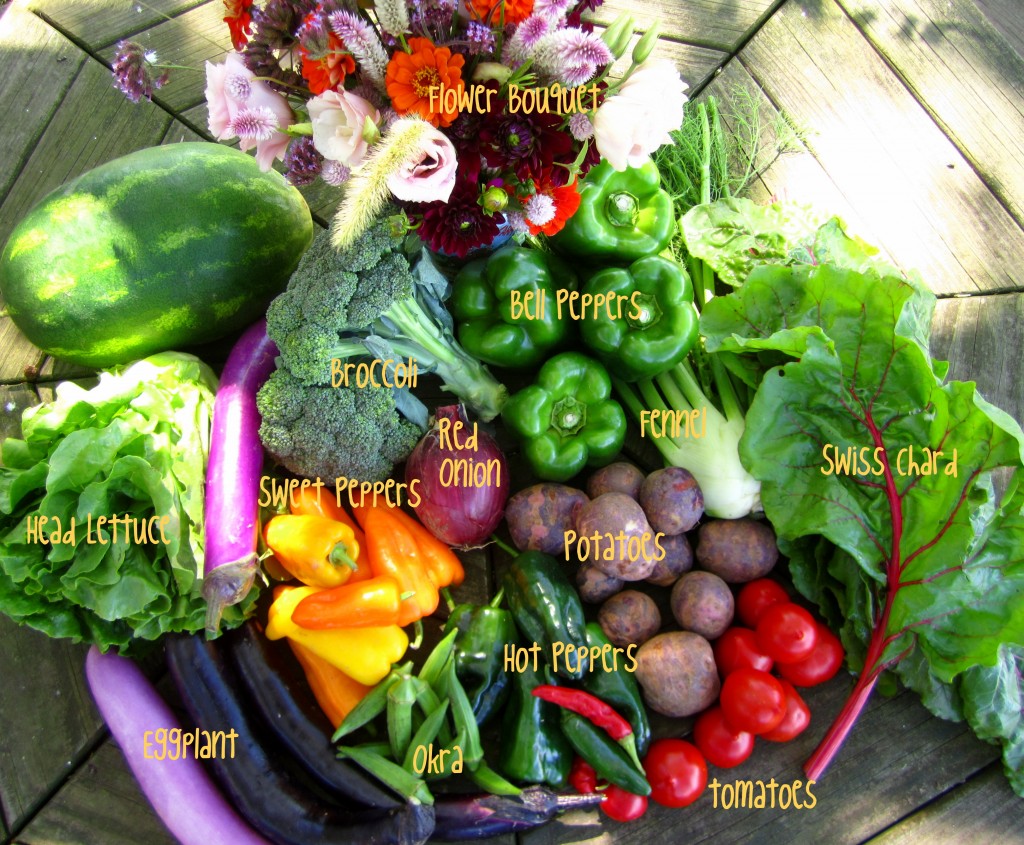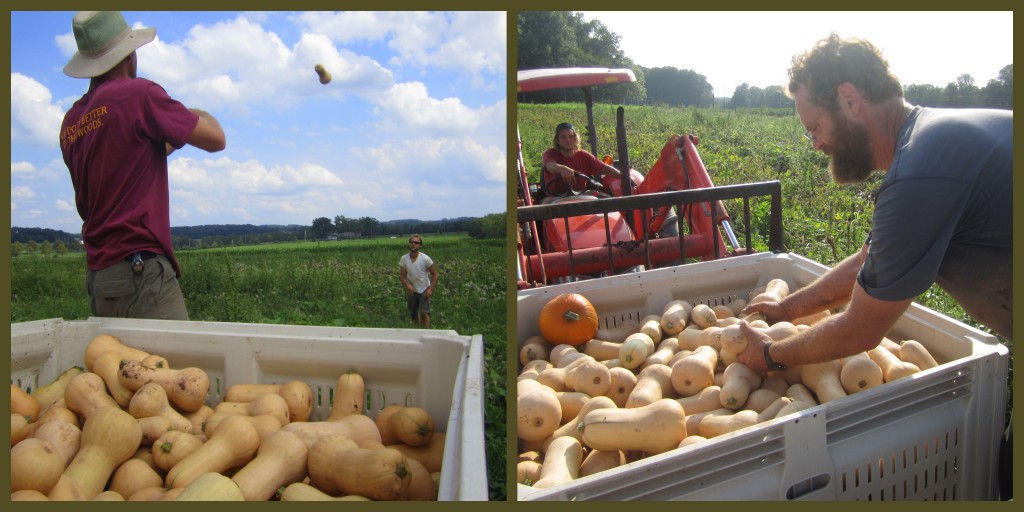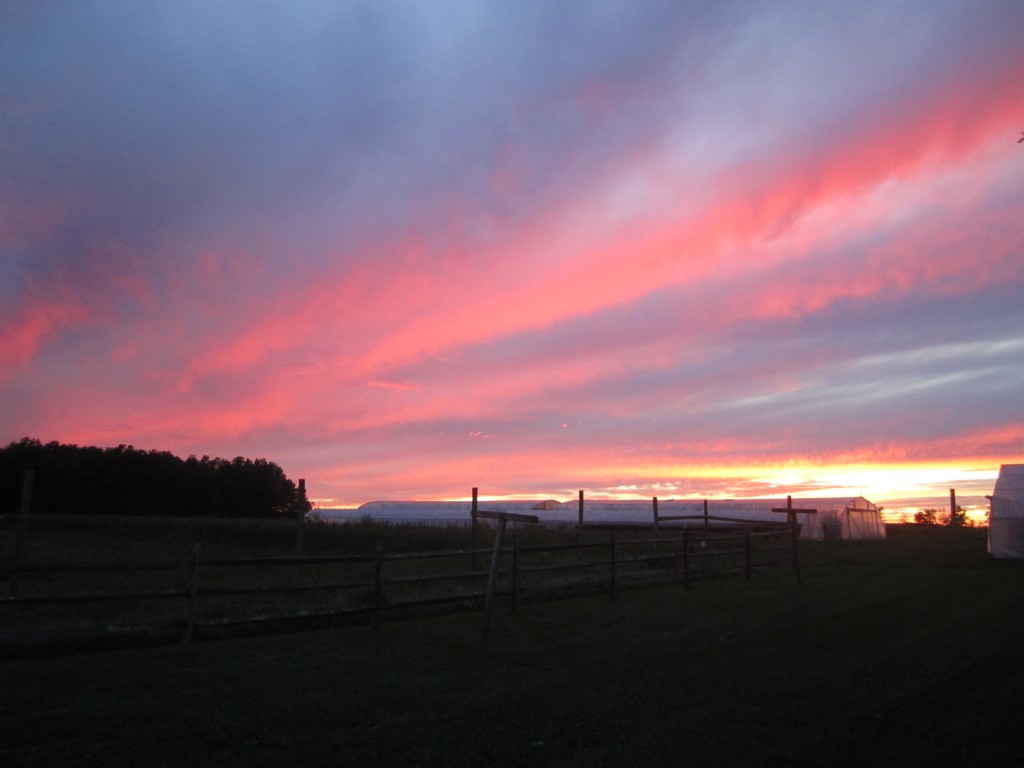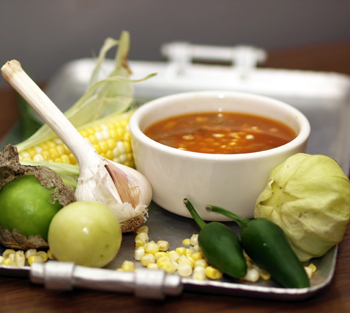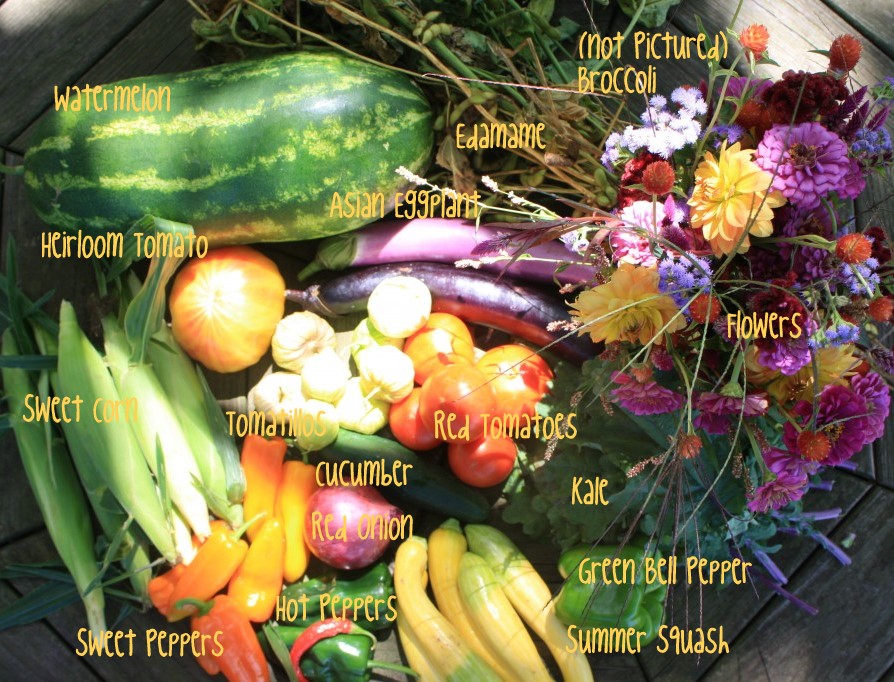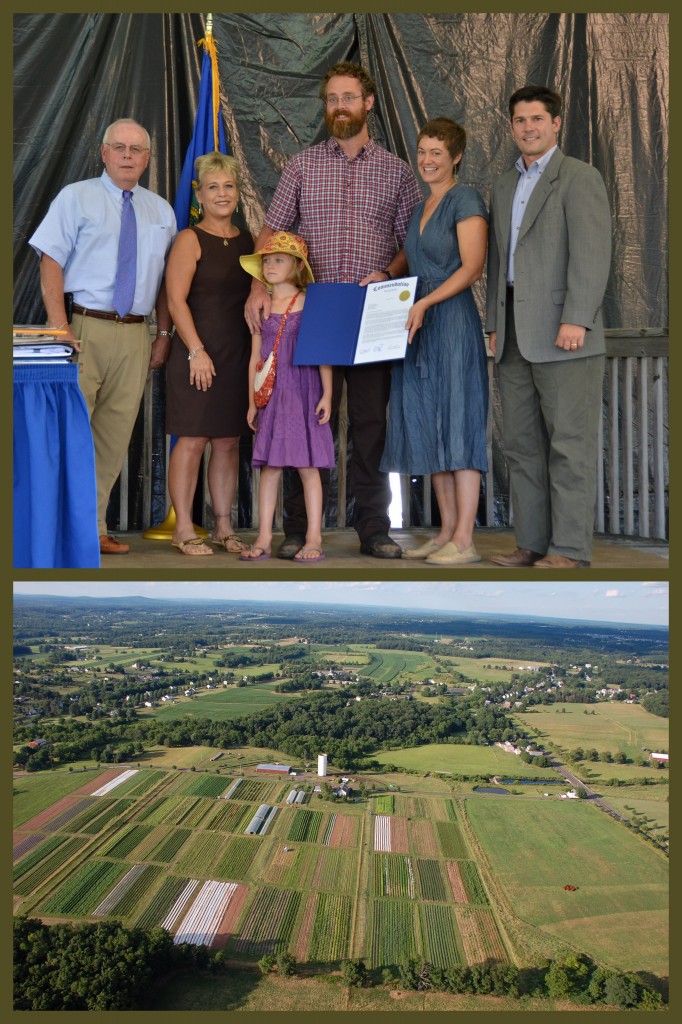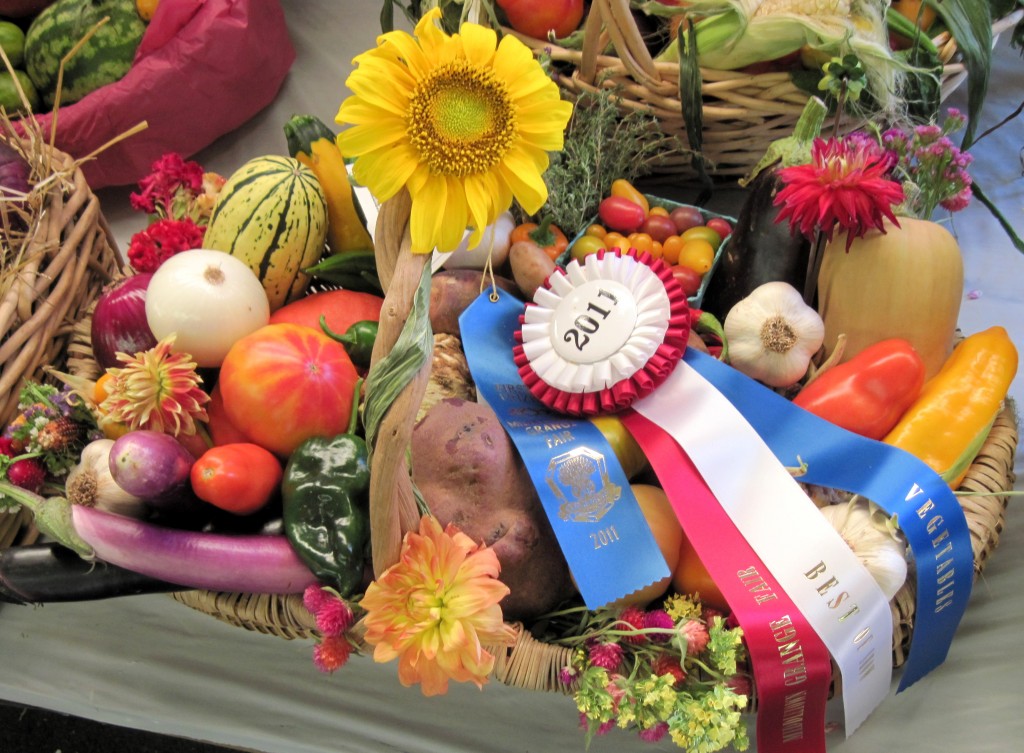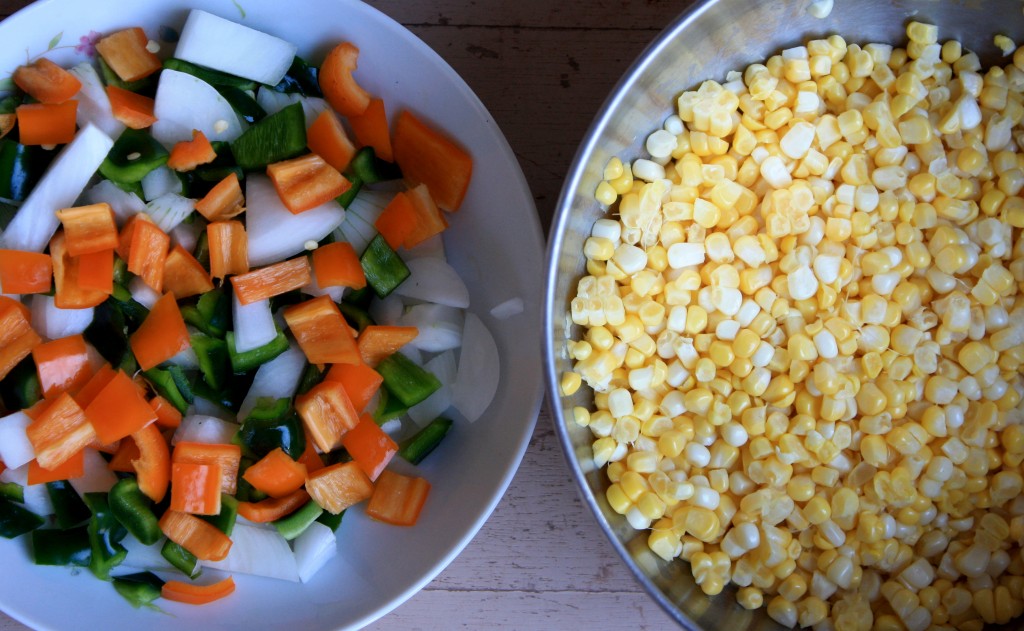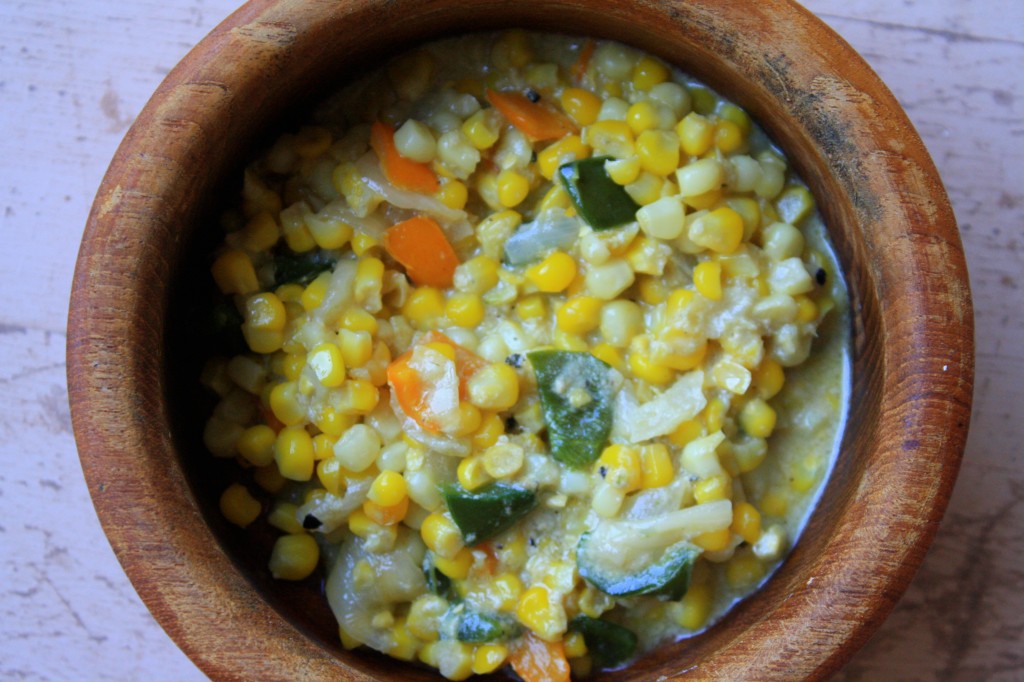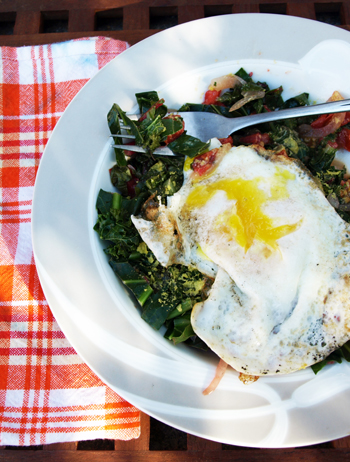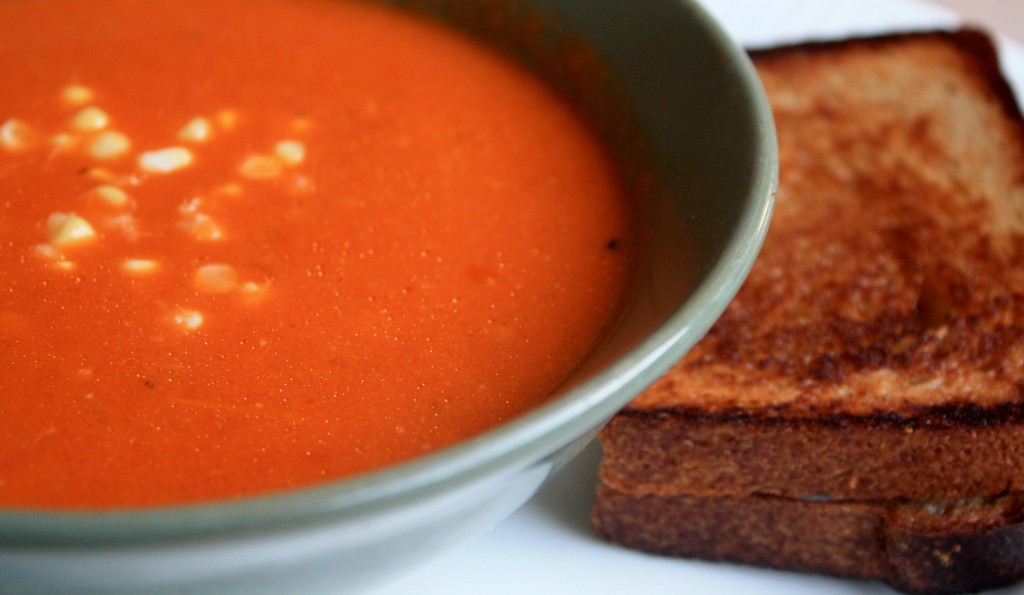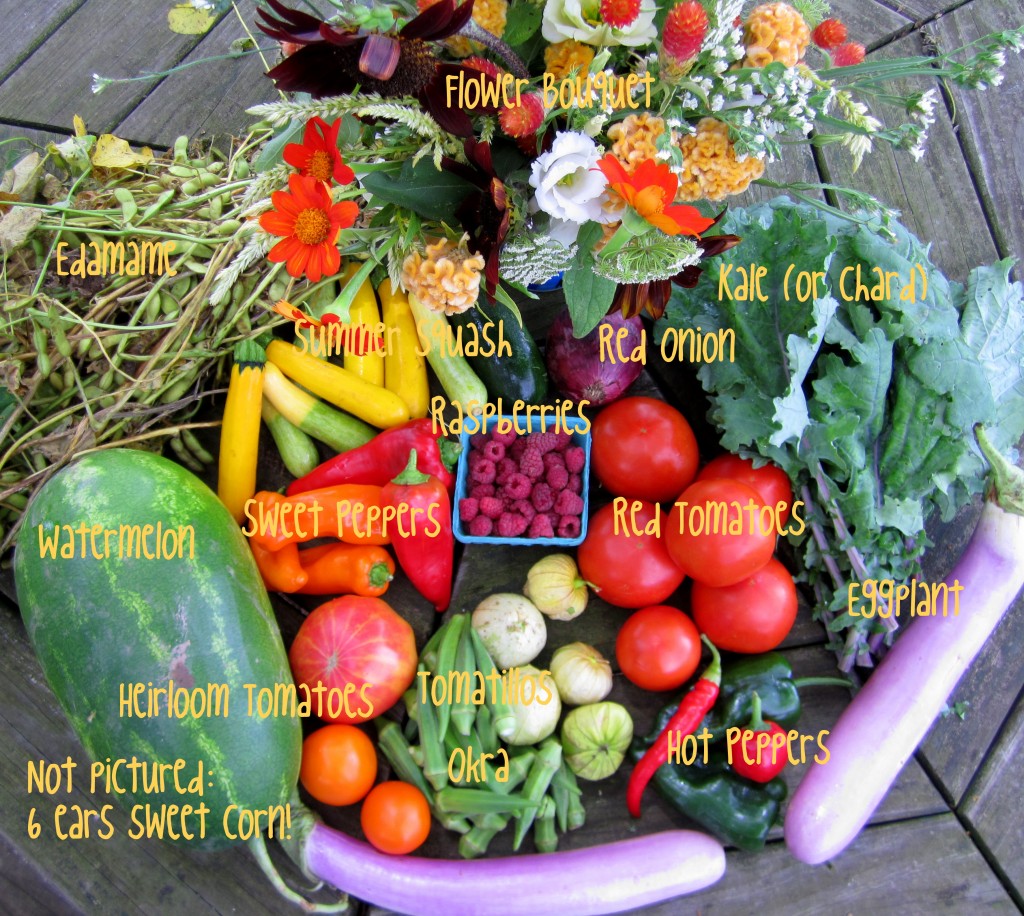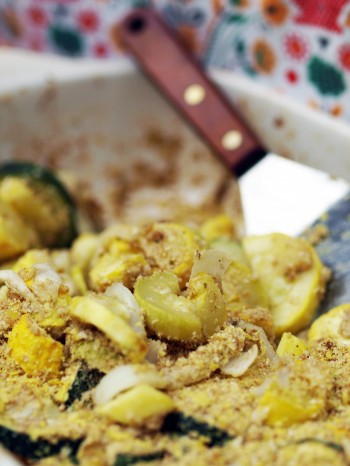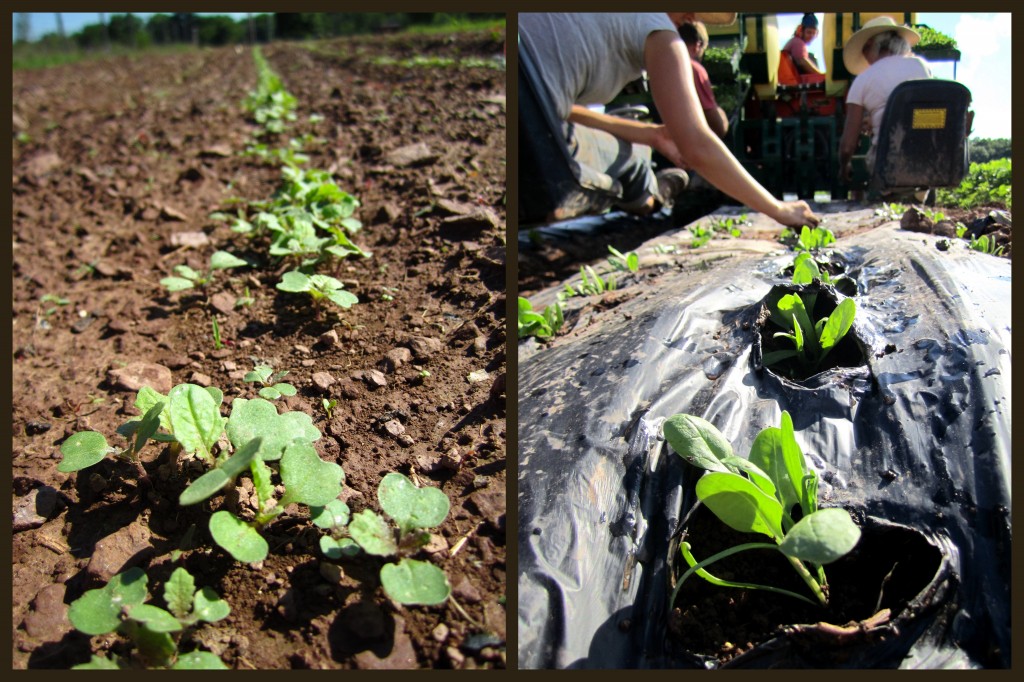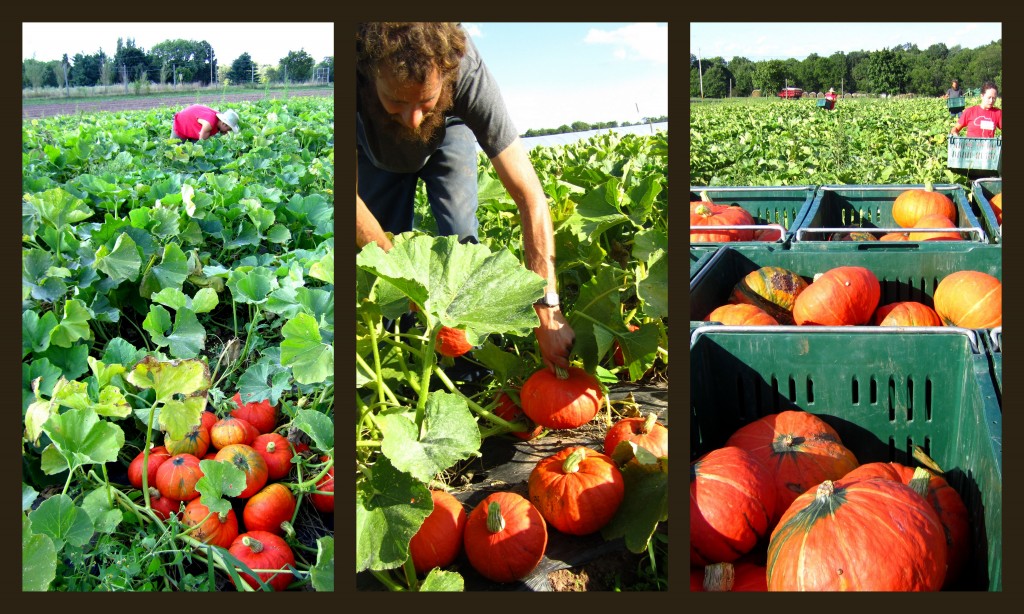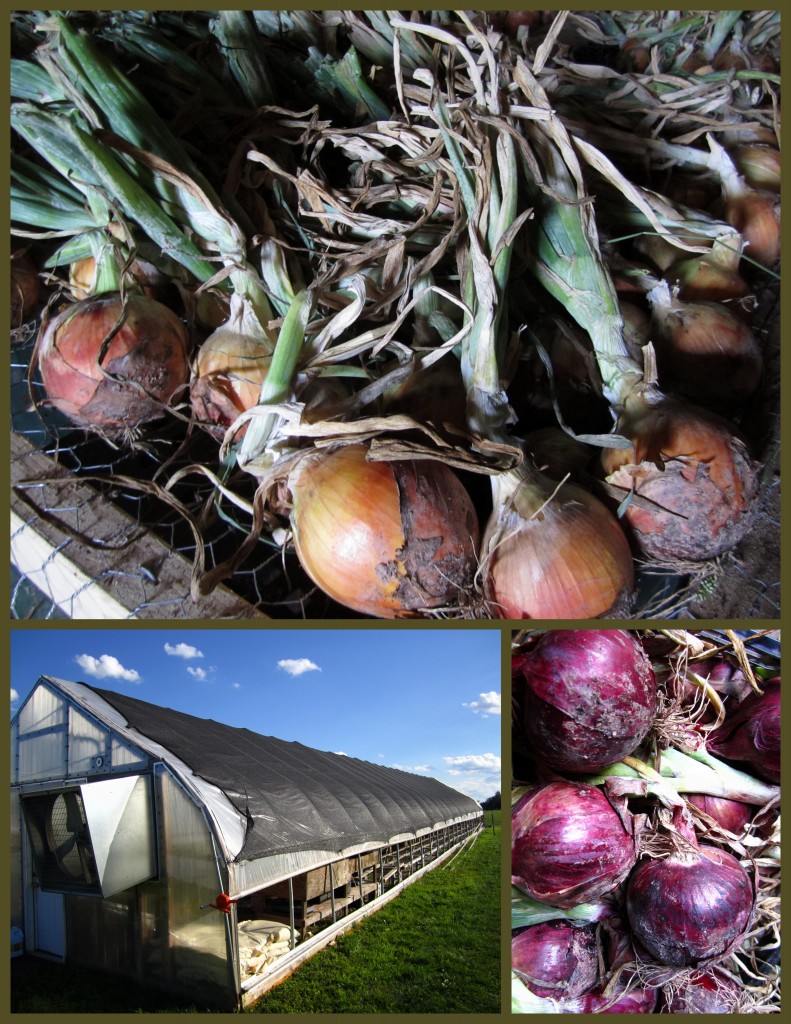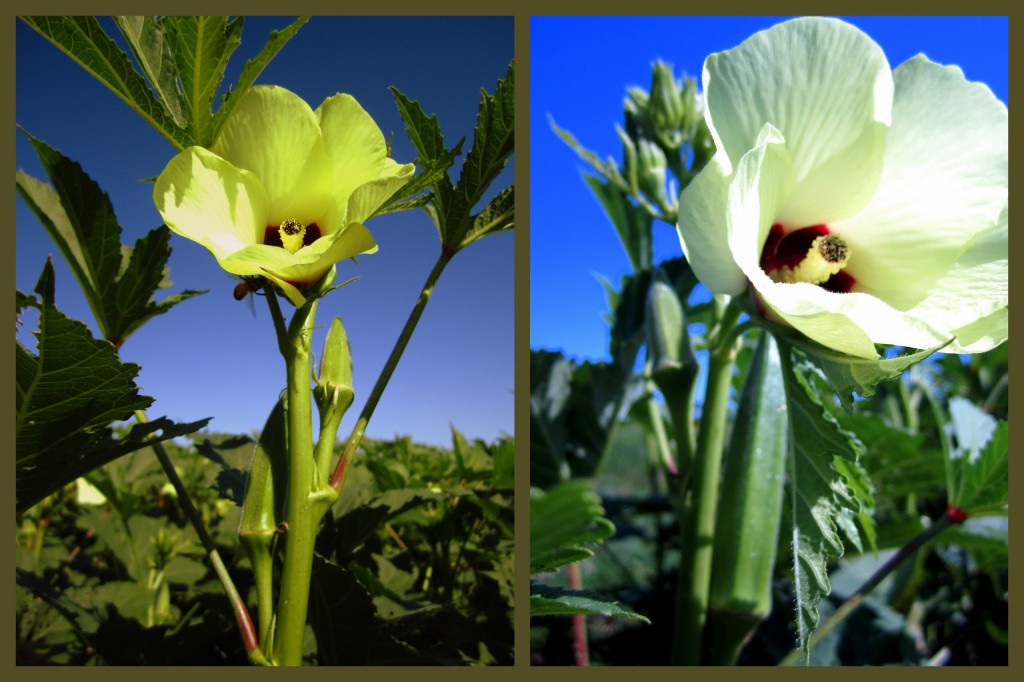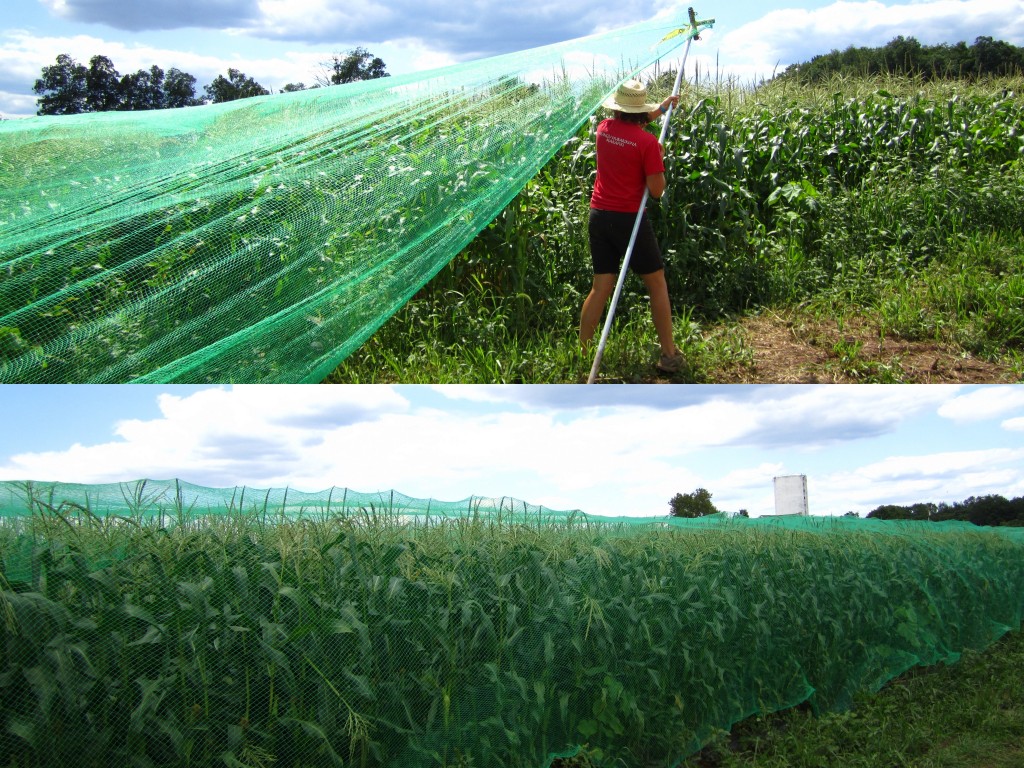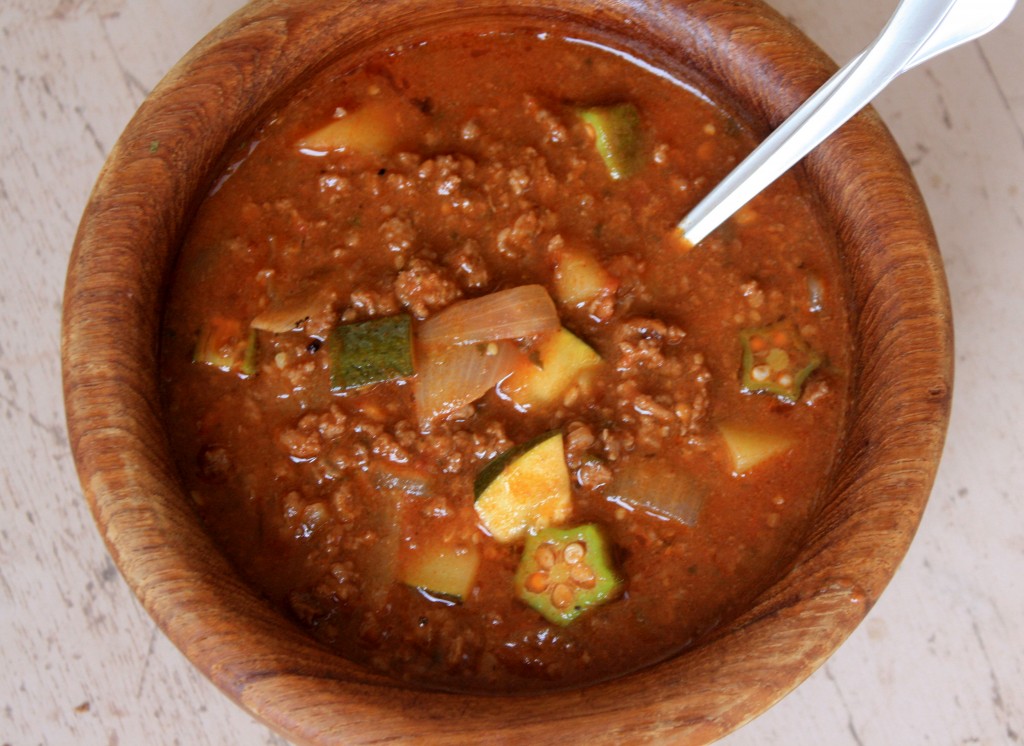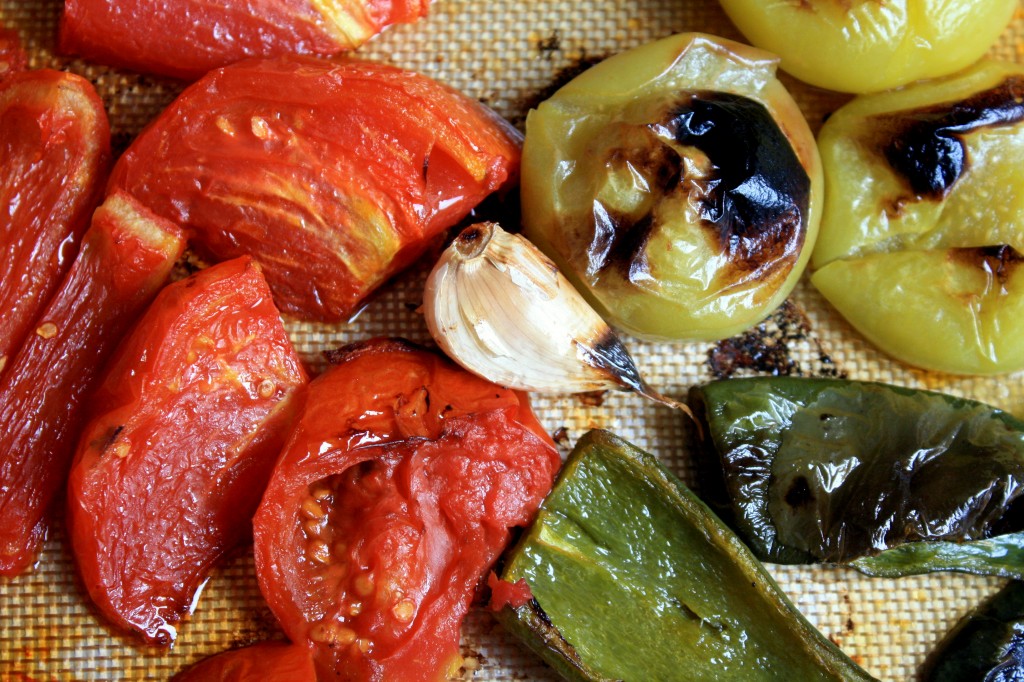31 Aug CSA Share Photo: Week 14
This week’s share is a little bit wacky, even for us. Blame it on the hurricane, if you will! Our windswept eggplant and bell pepper plants left a whole lot of fruit exposed to the sun, and susceptible to sunburn, so we gave out lots of both this week. Get out your favorite stuffed pepper recipe, or give Jana’s Green Pepper Dolmas a try.
For all the early birds that picked up your share right at 1:00, unfortunately we had a major harvest error, and you most likely took home an unripe watermelon. We caught the mistake close to 1:30, and removed the melons from the share. So sorry folks! We are battling quite a bit of downy mildew at the farm- our basil plants have succumbed to it, and the mildew is sweeping through the melon patch. We are hoping the fruit will ripen completely before the vines die, but there’s a chance they won’t. Today’s watermelon harvest fooled us a bit, so we’ll see what happens. The tomatoes are also winding down: 19 inches of rain in the month of August, along with these cool nights, just hasn’t been kind to our tomato plants. However,we are pretty excited that we took a chance on an early planting of broccoli (one crop that likes cool, wet weather), which you are enjoying this week in the share. Just a taste of what’s in store this fall!
The plants that looked so wilted after the whopping 9 inches of rain we received during the hurricane looked a lot better today. (That 9 inches was reported on CBS news for Perkasie… we’re still not sure if it was closer to 7 inches, but our raingauge was definitely full to the brim!) It is certainly a soupy swamp in our fields, so we are thrilled that we managed to harvest all our winter squash on Friday and Saturday before the storm. Now we start to think about all the potatoes and sweet potatoes that need digging….
As we watched the sunset over the greenhouses Monday night, we were very thankful that they withstood the wind, a true test of the “seatbelt” straps anchoring them down. Our thoughts are certainly with those folks living in the river communities and elsewhere, still dealing with power outages and flooded homes.
Photos and text by Tricia Borneman, Blooming Glen farmer and co-owner.





